JULES
You win.
Jules raises his hand off the briefcase.
JULES
It’s all yours, Ringo.
PUMPKIN
Open it.
Jules flips the locks and opens the case, revealing it to
Pumpkin but not to us. The same light SHINES from the case.
Pumpkin’s expression goes to amazement. Honey Bunny, across
the room, can’t see inside.
HONEY BUNNY
What is it? What is it?
PUMPKIN
(Spoken softly) Is that what I think it is?
Jules nods his head: “Yes.”
PUMPKIN
It’s beautiful.
Jules nods his head: “Yes.”
Throughout the movie Pulp Fiction, characters have been influenced by a mysterious briefcase owned by the big crime boss Marcellus Wallace. This plain black object is found in the opening sequence when Vincent and Jules recover it from some bumbling criminals.
The briefcase is an example of a MacGuffin, sometimes spelled McGuffin or Maguffin. We know that it is important because bullets were exchanged and lives were lost in its recovery.
So, what is it?
The answer is, it really doesn’t matter.
No, seriously. The simple briefcase is there for one purpose — to begin the story or plot. The audience doesn’t really care about the briefcase because they’re more interested in what the characters are doing.
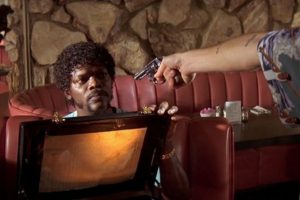 Quentin Tarantino even pokes a little fun at the audience in the ending scene, excerpted above. When Jules opens the case and shows the contents to Ringo/Pumpkin, all we (the audience) knows is that the case is valuable and, now that it’s opened, it gives off a mysterious glow that takes everyone’s breath away. Now we want to know what is in the briefcase, but Jules slams it shut and wraps up the scene and the movie. We never find out what was the impetus of over two hours of craziness. Don’t believe me? Just Google “pulp fiction briefcase” and enjoy 174,000 hits and lots of pages with different theories, including Kryptonite and Marcellus’ soul.
Quentin Tarantino even pokes a little fun at the audience in the ending scene, excerpted above. When Jules opens the case and shows the contents to Ringo/Pumpkin, all we (the audience) knows is that the case is valuable and, now that it’s opened, it gives off a mysterious glow that takes everyone’s breath away. Now we want to know what is in the briefcase, but Jules slams it shut and wraps up the scene and the movie. We never find out what was the impetus of over two hours of craziness. Don’t believe me? Just Google “pulp fiction briefcase” and enjoy 174,000 hits and lots of pages with different theories, including Kryptonite and Marcellus’ soul.
The joke was on us, which made the movie even more memorable. It also helped to spur debates as to what was in there, which helped to get the word out concerning the movie.
MacGuffins have been around for a while. The concept can be seen in many old stories, such as the Holy Grail or a certain black bird in a Bogart movie. The purpose of a MacGuffin is to provide a method to get the plot rolling, and the object can be anything external. A big pile of cash or even vague concepts such as glory and honor can be used to begin the tale. The plot revolves around the characters, while the MacGuffin is really ignored for the most part once the story is kickstarted in high gear.
Alfred Hitchcock was well known to use this device to begin his movies starting back in The 39 Steps. Adventures and thrillers used MacGuffins extensively in order to have the story moving along as quickly as possible. Even the original Star Wars: A New Hope uses stolen plans inside R2-D2 as a MacGuffin. Everyone is running around looking for the plans hidden in the little droid. The chase evolves, and in this case so does the MacGuffin’s container — into a beloved iconic character. The data gets extracted at the end of the movie and the final battle against the Death Star commences.
A MacGuffin is a little white lie that the audience or reader plays along with to get to the fun part of the journey. After all, a story about a briefcase would be rather boring, with it being worried about scuffs or how its hinges could use a spot of oil, thank you very much. The hand that holds the briefcase, however, can be a thrilling and satisfying tale.
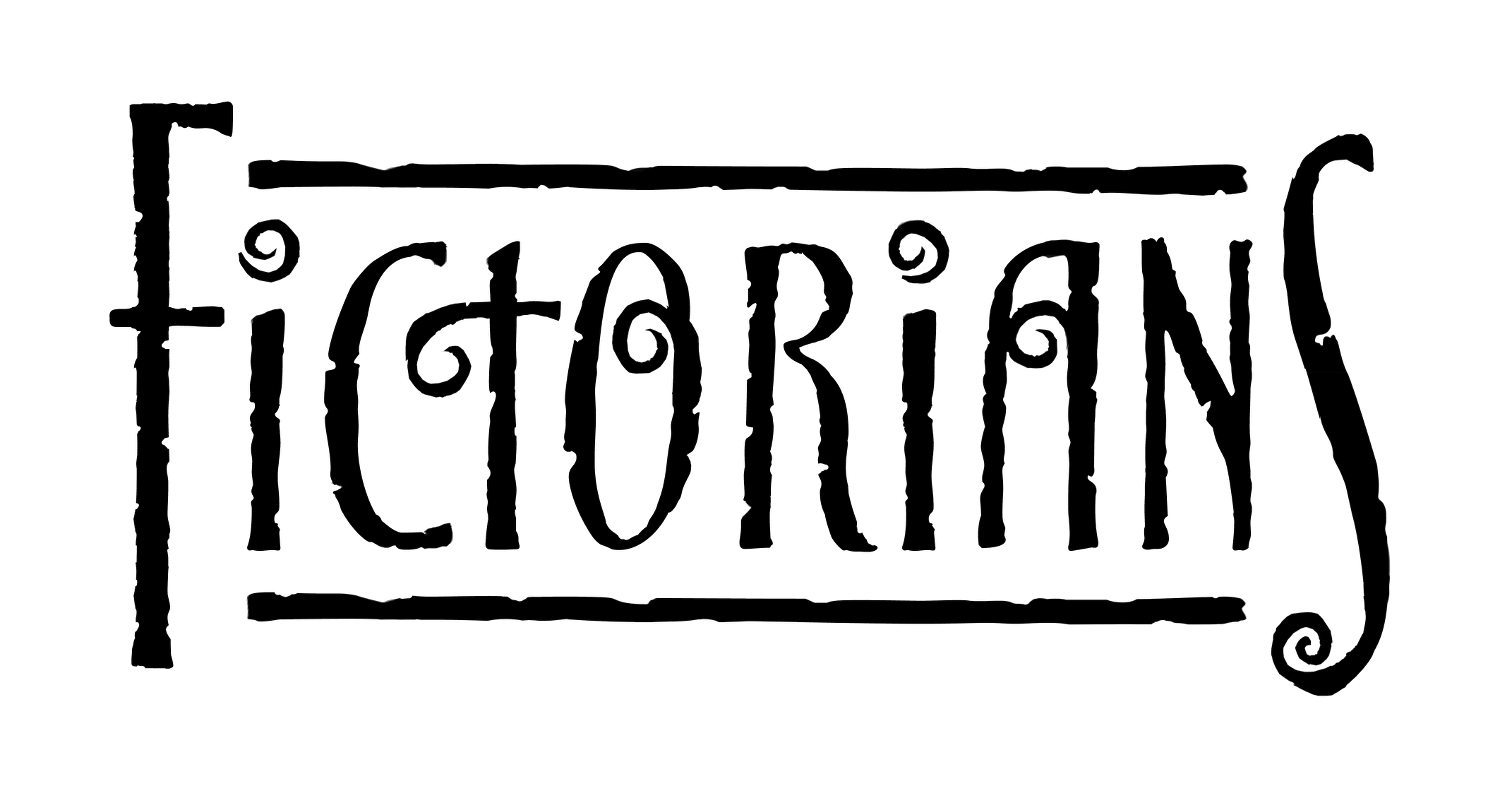


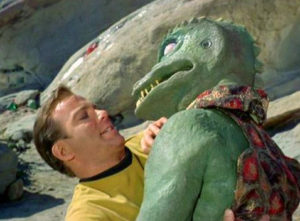

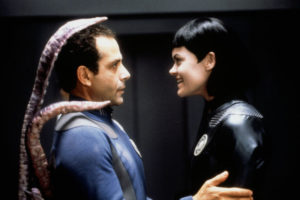 It’s important that things keep getting in the way of the characters pursuing each other. If they were so close to each other that they can smell each other’s toothpaste, have someone (such as the comic relief character) stumble into the room just microseconds before their lips were going to touch. Have the Sklorr set up a nice date with her human girlfriend, only to have the transport tube break down on the way to the restaurant. The human will be angry and wonder if her date stood her up, while the Sklorr will be frustrated that her romantic date she planned out in detail was ruined because of a tiny component she forgot to replace when she worked on the tube system this morning.
It’s important that things keep getting in the way of the characters pursuing each other. If they were so close to each other that they can smell each other’s toothpaste, have someone (such as the comic relief character) stumble into the room just microseconds before their lips were going to touch. Have the Sklorr set up a nice date with her human girlfriend, only to have the transport tube break down on the way to the restaurant. The human will be angry and wonder if her date stood her up, while the Sklorr will be frustrated that her romantic date she planned out in detail was ruined because of a tiny component she forgot to replace when she worked on the tube system this morning. A ticking clock is an example of something that is constrained and must be dealt with, lest the characters have to deal with serious (and often dire) consequences if they fail. The entire plot can be constructed around the ticking clock, or it can be something smaller, such as a scene, where the protagonists have to get something done immediately.
A ticking clock is an example of something that is constrained and must be dealt with, lest the characters have to deal with serious (and often dire) consequences if they fail. The entire plot can be constructed around the ticking clock, or it can be something smaller, such as a scene, where the protagonists have to get something done immediately.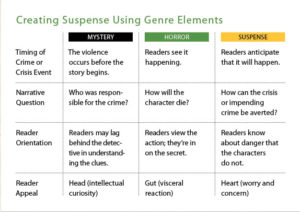 The ticking clock method of generating tension in a story can be used anywhere in fiction. Here’s some more examples:
The ticking clock method of generating tension in a story can be used anywhere in fiction. Here’s some more examples: The most important things to setting up a ticking clock/limited something scenario are:
The most important things to setting up a ticking clock/limited something scenario are: